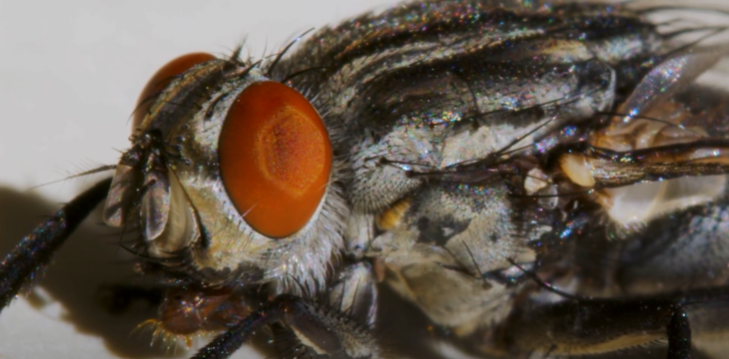Taking inspiration from nature, researchers mimic the fruit flies' eye movement to significantly improve the reaction speed, potentially changing flight control in robots.
A research team from Pennsylvania State University examined the eye motions of fruit flies, whose reaction speeds are about 30 times faster than a blink of an eye. The fruit fly is tethered in an experimental setup involving a virtual reality (VR) flight simulator, LED lights, with their response recorded with high speed cameras.

The details and results of their studies are published in the Proceedings of the National Academy of Sciences on Tuesday, September 1.
Active Sensing for Flight Motor Response
Active sensing is often used by animals to respond accordingly to their environment, picking up sensory inputs that guide their motor actions. For fruit flies, they generate a pattern of both head and bodily movements to maintain a stable gaze. Researchers created a control framework that follows that same optomotor gaze stabilization reflex that fruit flies have.
"If you are able to study flies doing what they do best-flying-you can find some incredible engineering solutions that already exist in biology," first author and mechanical engineering doctoral student Benjamin Cellini said in a news release from Penn State. Cellini worked together with his adviser, mechanical engineering assistant professor Jean-Michel Mongeau, who is also the director of the Bio-Motion Systems Lab.
RELATED: Physicists train robotic gliders to soar like birds
The study revealed how fruit flies use their vision to quickly coordinate their wings in response to the visual stimulus they were receiving. Since the eyes of the fruit fly are fixed to its head, researchers tracked the entire head movement to have an idea where it was looking.
Stabilizing Gaze, with Potential in Robotics
Stabilizing gaze is common among animals and even humans. In the news release, it cited the seamless movement of eyes, head, or body to scan a place as an example. "But that is a challenging, complex problem to understand, how are we and other animals able to do that so well?" Mongeau inquired. He added that his lab is interested in active sensing, explained as a branch of both biology and engineering that deals with the relationship of the sensor movement to the performance of the actual sensing activity.
RELATED: Fruit Fly Uses Rhodopsin 7 As A Light-Sensing Molecule In Its Brain
Regarding its potential in robotics, existing robots are usually designed with stationary mounted sensors, which keeps it independent, and decoupled, with the actual motion mechanisms of the robot. By understanding the coordination of vision in response to sensory information and to motor activity, as in the Penn State study, the flight control systems for future robots will be greatly improved.
In fact, researchers in the study found out that the fruit flies' eyes have a reaction time four times faster than its body or its wings. Furthermore, its vision is an important factor to coordinate its wind movements.
"We've shown that their eyes can control and stabilize their vision better than we originally thought, by reducing motion blur," Cellini commented. The same phenomenon can be observed in sports, especially baseball, who can follow the speeding ball with less blur and improved response time.
Additionally, researchers tried to glue the fruit flies' heads in place, observing that restricting head motion had a drastic effect on their flight performance.
Check out more news and information on Robotics in Science Times.
© 2025 ScienceTimes.com All rights reserved. Do not reproduce without permission. The window to the world of Science Times.











